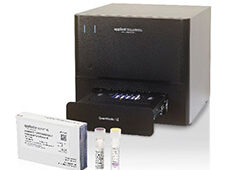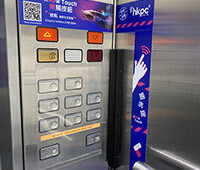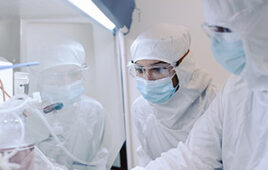
A team of scientists at the University of Southampton have established significant results in the elimination of Covid-19 within minutes, on a copper-based alloy, demonstrating its ability to reduce coronavirus transmission rates, via commonly touched surfaces, manufactured with this metal. Working with Sylatech, an engineering business in North Yorkshire, U.K., Professor Bill Keevil, Dr. SandraWilks and their team undertook trials using Sylatech’s copper-based alloy, MB1, which is known to have excellent antibacterial and anti-viral properties against a range of pathogens. The study, undertaken in strict laboratory conditions, simulated the virus landing on a surface, such as it would from a cough or sneeze, and looked at how long it survived. It compared the viability of the coronavirus on stainless steel against Sylatech’s copper-based alloy. The startling results showed that on the copper alloy, the virus viability was completely eliminated within 10 minutes. There was a 93.9% reduction in the virus within 5 minutes and yet on stainless steel, the virus remained fully infectious, with no reduction after one hour. Previous research has also shown the virus to liveon stainless steel and plastic surfaces for up to 72 hours. and a recent article in The Lancet suggested that it can even survive for 7 days.
Comparison of virus survival rates on common materials vs. MB1 copper alloy
Material Lifespan of Coronavirus Source
MB1 copper alloy < 10 minutes* *University of Southampton
Stainless Steel 7 days** **The Lancet
Surgical mask (outer layer) 7 days** **The Lancet
Plastic 7 days** **The Lancet
Glass / banknote 4 days ** **The Lancet
“With the coronavirus having such a significant impact on all of our lives and with the looming risk of further spikes, it is clear that fundamental changes are required in our approach to hygiene. The antimicrobial properties of Sylatech’s copper alloy are clear in their rapid rate of virus elimination and action should be taken to capitalize on this,” said Professor Keevil, commenting on the results.
Items such as door handles, light switches, toilet levers, taps and other regularly touched surfaces all carry significant risk in spreading bacteria and viruses. Hospitals, shops, offices, airports and other locations with high human traffic, need to seriously rethink their environment and take urgent action to address the hygiene risk. Having recently launched the KeepSafe, a personal handheld device made from its MB1 alloy, Sylatech is now progressing a number of other potential applications to further exploit the results from the study.
“Clearly we are delighted that our copper alloy demonstrates such a strong ability to combat the coronavirus. The KeepSafe, our simple device which enables users to avoid touching handles, buttons or grabbing items unnecessarily, is a specific innovation to exploit the benefits of the material. Our design engineers stand ready, together with our specialist investment casting and CNC machining capability, to support businesses looking to create products using our MB1 copper-alloy to provide permanent changes against the virus,” said Charlie Breese, Sylatech’s managing director. “It is contingent upon Government and business leaders to implement change that creates a safer environment for all of our futures.”
For more information, visit thekeepsafe.co.uk
.





I am trying to create a copper killing machine to clean environment.
I used to use lemon to make my copper bright and shiny for recycling. The reaction when these two meet should kill the compromised virus instantly without heat or electricity applied. Then adding salt would cause another reaction. Would all these prove fatal for the virus in an instant?
I would like to help my Nation and world but don’t know anyone in research.
Almost every thing about copper I like. [Only one thing their mining sites for extracting copper is not modernized in which bad pollution at area surrounding of the mining]. I have done some observation on Aedes breeding, and copper do inhibit the mosquito immature stages. Good luck on your work.
if lemon juice and copper kill the covid 19 virus instantly , why not take lemon juice and copper water as a precaution , just like a natural antibiotic , the body would make it’s own defense system against any foreign virus !